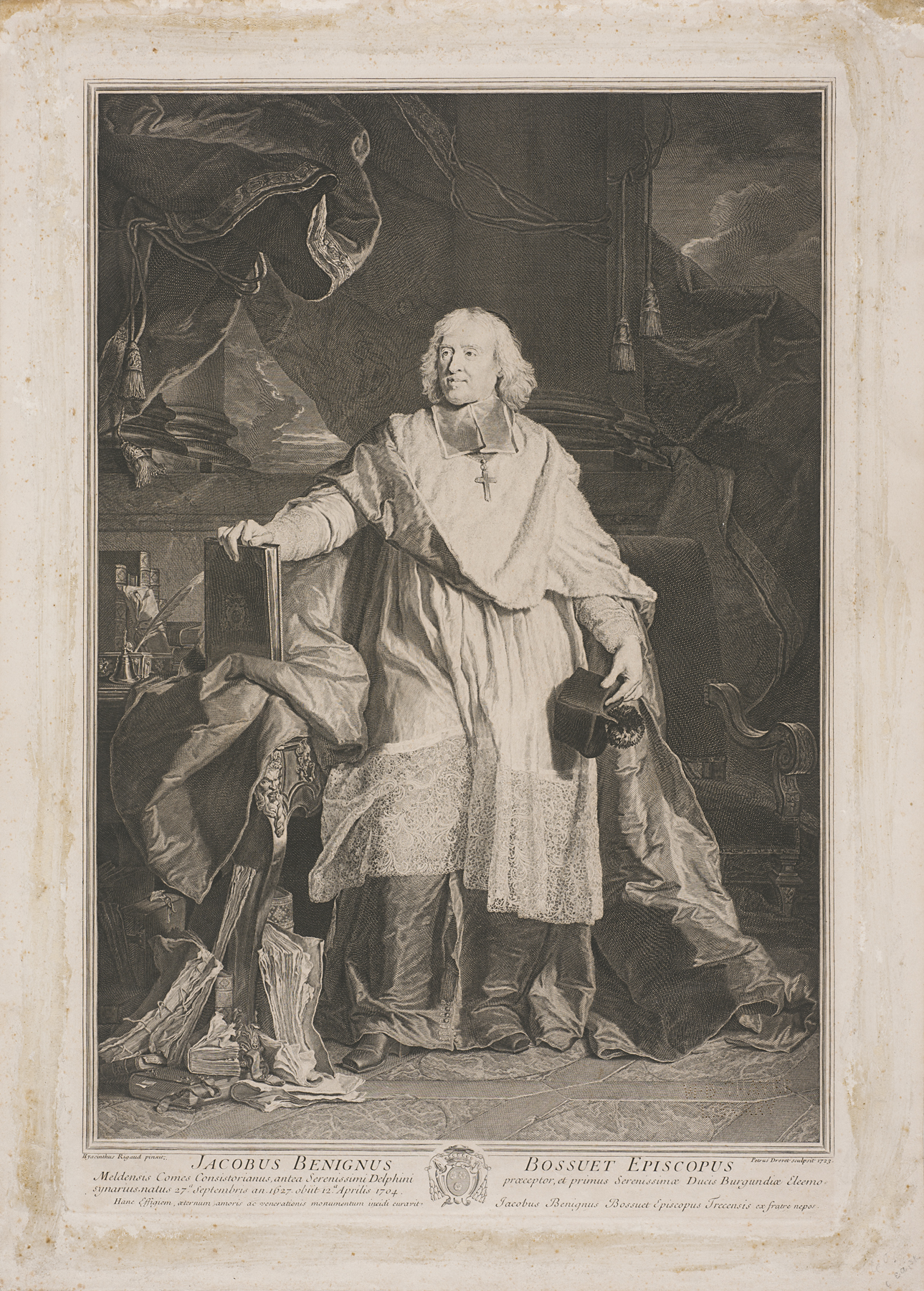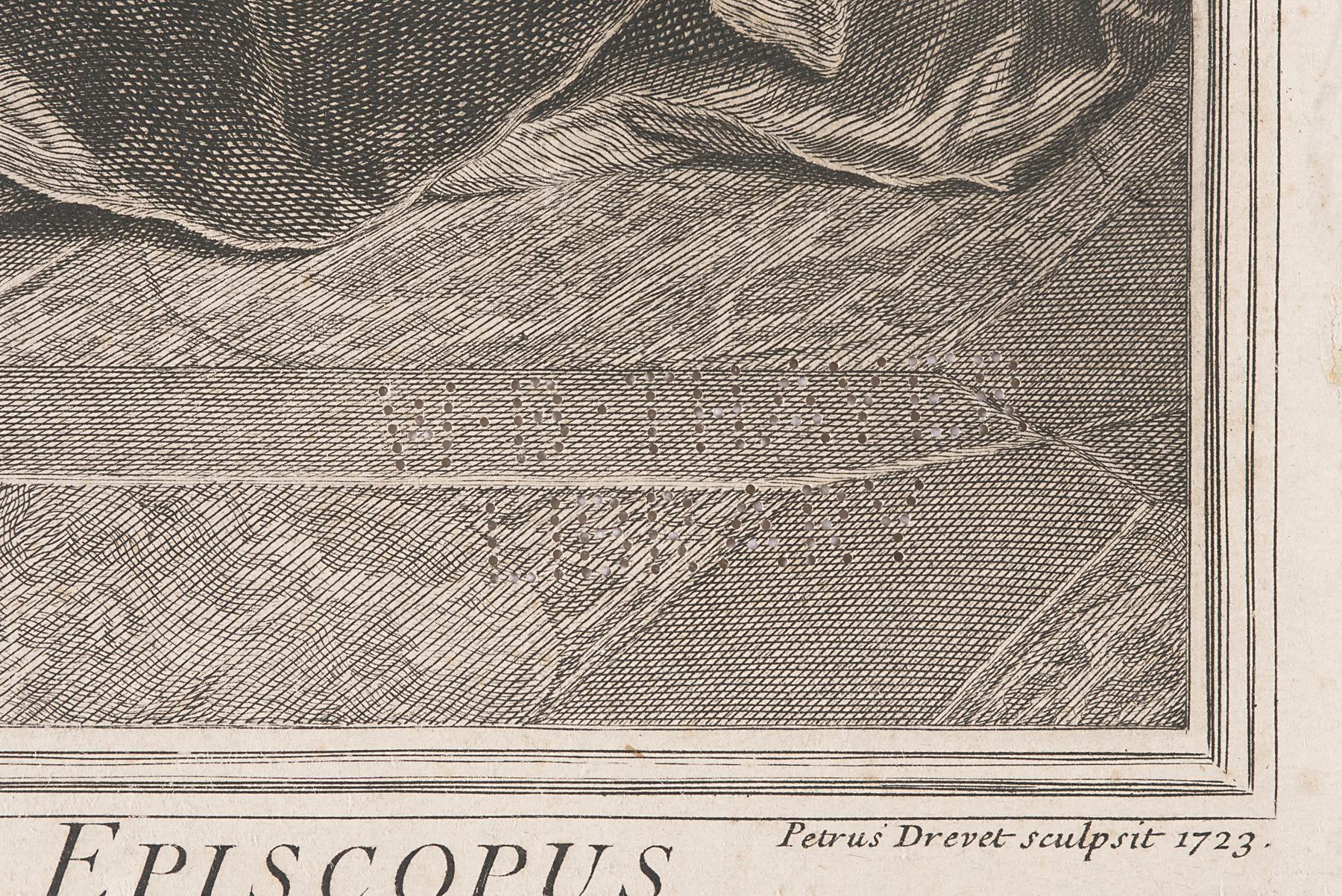Portrait of Jacques-Bénigne Bossuet, Bishop of Meaux, Pierre-Imbert Drevet; Hyacinthe Rigaud
Artwork Overview
Pierre-Imbert Drevet, artist
1697–1739
Hyacinthe Rigaud, artist
1659–1743
Portrait of Jacques-Bénigne Bossuet, Bishop of Meaux,
1723
Where object was made: France
Material/technique: engraving
Dimensions:
Image Dimensions Height/Width (Height x Width): 475 x 332 mm
Sheet/Paper Dimensions (Height x Width): 572 x 410 mm
Image Dimensions Height/Width (Height x Width): 18 11/16 x 13 1/16 in
Sheet/Paper Dimensions (Height x Width): 22 1/2 x 16 1/8 in
Mat Dimensions (Height x Width): 25 x 20 in
Image Dimensions Height/Width (Height x Width): 475 x 332 mm
Sheet/Paper Dimensions (Height x Width): 572 x 410 mm
Image Dimensions Height/Width (Height x Width): 18 11/16 x 13 1/16 in
Sheet/Paper Dimensions (Height x Width): 22 1/2 x 16 1/8 in
Mat Dimensions (Height x Width): 25 x 20 in
Credit line: William Bridges Thayer Memorial
Accession number: 1928.7140
Not on display
If you wish to reproduce this image, please submit an image request



